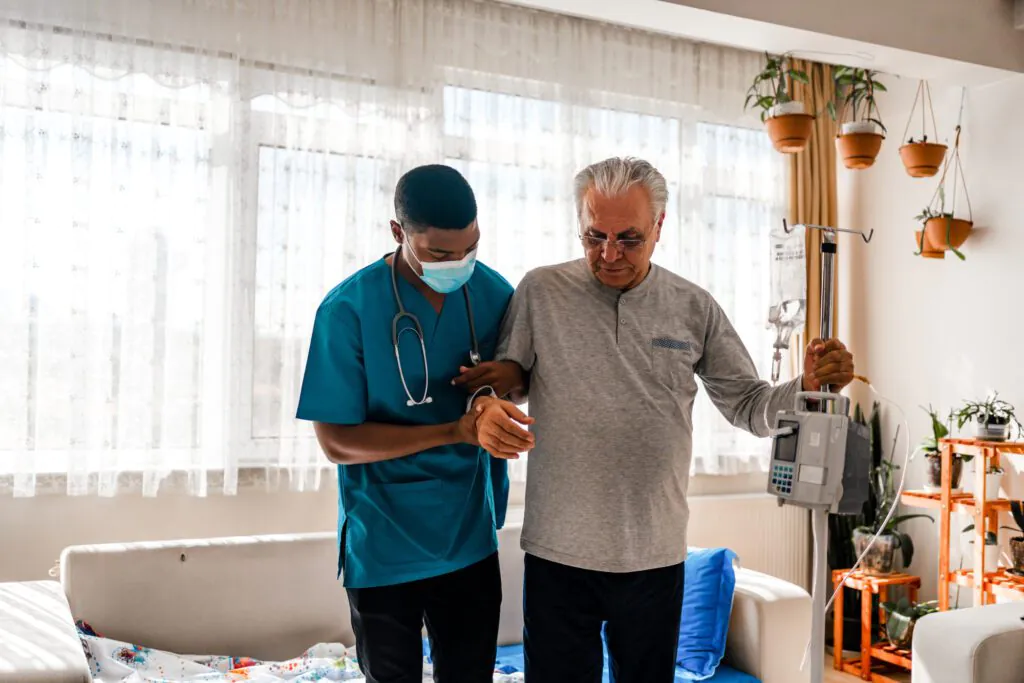
Situation
“Axios’ home care team has real commitment and empathy for patients,” said one woman who received remote healthcare services through the program. “They are understanding when I need to reschedule appointments and they’re even open to delivering care outside of business hours. Kudos to them.” – Patient enrolled in Axios-supported program
Where does a patient go when they’re in need of care and treatment? Many of us would immediately think of a hospital or some other medical facility, but that can be costly, involve a long wait, and put more of a burden on an already-overtaxed part of the healthcare system.
The COVID-19 pandemic only made this worse, with hospitals left with no choice but to reassign significant resources, time, and physical space to treat urgent coronavirus cases. This unfortunately, despite the best attempt by providers, left many patients in need of critical care and treatments for other diseases behind.
A new way was needed to provide post-acute and long-term care to complement care delivery in hospitals and health facilities.
Solution
In 2020, Axios designed a cross-regional program spanning the United Arab Emirates, Saudi Arabia, and Kuwait that would utilize a team of government health agencies, pharmaceutical companies, physicians, pharmacies, and others to help overcome the growing burden on traditional health facilities and help close the patient support gap that exists outside the hospital. The solution was centered around remote, at-home care customized to the needs of each individual patient.
Through this partnership, eligible patients would receive quality, affordable care from Axios’ experienced, multidisciplinary team of healthcare professionals in the most convenient and appropriate setting for them, whether at home, in a facility, or some combination of the two. Virtual appointments with physiotherapists and nutritionists, delivery of prescribed treatments directly to a patient’s door, and home visits by a multidisciplinary team of specialists were all options to offer higher quality care at a better value for both the patient and the healthcare system.
Results
The program has proven popular among patients and health care practitioners, and here are some of the results seen thus far:
Patient acceptance. 20,000+ patients have been enrolled in two years.
Practitioner acceptance. 150+ health care practitioners have been involved with the program, recommending patients and guiding them through their treatment journey.
Remote delivery. More than 4,000 medications have been delivered to approximately 1,400 patients, offering individuals a new way to continue their prescribed treatment without having to visit a hospital or pharmacy.
Multidisciplinary team visits. 98% of patients that received care at home requested additional services delivered in this manner.
Additional services. 90 patients remotely received a full nutrition plan. More than 270 patients remotely completed their physiotherapy services. Nearly 1,500 received diagnostic services. Over 12,300 received vaccination services at home, which is also where 1,000 patients completed IV drip.
The program has brought a new level of flexibility to patient care in the Middle East while reducing hospital burden.

